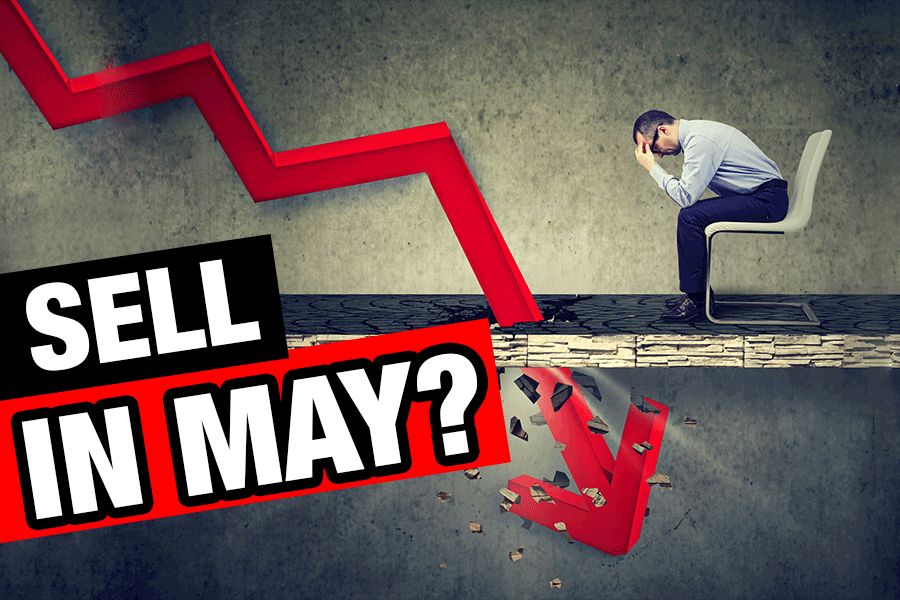One of the best-known investment saying is: “Sell in May and go away.” Is it true? Should you sell your stocks in May 2020 and go away, or even sell futures? Let’s have a quick look!
As always, this is not, and should not be construed as investment advice.
You can also watch my video “Sell In May And Go Away 2020 – Is the saying true and what should you do? – In 3 minutes!” on my YouTube’s channel. Check it out!
S&P 500: The historical evidence!
First, is it a valid statement? On average, if we observe the S&P 500 performance, do we see a pattern? From the close prices of April’s to October’s last trading days, in other words, the performance of the six months from May to October, the index has lower returns than the performance for the next six month period, November to April.
I took the S&P 500 performance data, starting from April 1980 to April 2020, in other words, forty years, and I computed the returns for every six months.

On average, the performance was 2.45% from May to October, however for the period November to the following April, the return was, on average, a positive 6.95%. Nearly three times more!

And if we look only in the last ten years, the performance from May to October is 2.62%, and from November to April, the return is 6.9%. Those figures are close to the long term average.
Another aspect of the S&P performance is that when it performs poorly, it performs way worst from April to October than the following six months. Let’s have a closer look.

When the returns are negative for the six months period, the S&P lost 8.64% on average from May to October! On the other hand, when it drops, from November to April, the S&P 500 loses only 5.68% on average. The period from May to October is riskier than the one from November to April.
What should you do?
Historically, the trend is unmistakable. Even if I would not say that, in general, you should sell in May, after all the average returns stay positive, you should at least reevaluate your investments.
Now, what about May 2020? The market strongly rebounded in April after March’s melt down. It means we are at a relatively high level, not to a pre-coronavirus level, but we are midway from the March’s bottom. It may constitute a selling opportunity some investors can take advantage of.
But the most important thing to consider is how do you think the economy will perform in the near- and medium-term. Will the 30 million jobs destroyed have an impact? Do you expect business closures and defaults, and if so, how can we have a V-shaped recovery? Can the demand be strong with the economic uncertainties? Those are the questions you need to ask yourself when evaluating your current and future investments.
As I said in my post about the first-quarter GDP figures, the second quarter will be dreadful. The earnings will be horrific, and defaults are unavoidable. I think the economy will suffer until 2021. I, for one, believe that the stock market is too high and that a correction will probably happen somewhere between now and October.
Share your thoughts, and thank you!
Don’t forget to share this post. You can also subscribe to my YouTube’s channel! Thank you so much for your support!
Question of the day:
What is your opinion about the stock market level? Do you anticipate a correction? Let me know in the comments!



Recent Comments